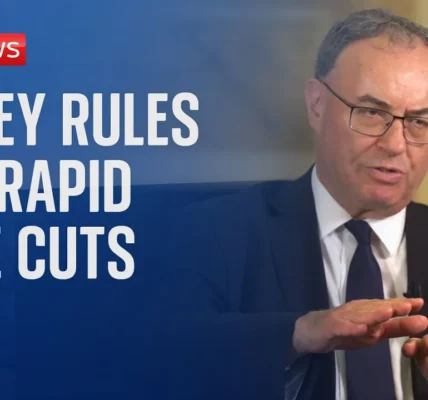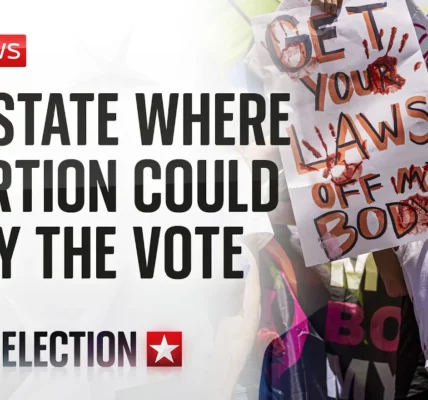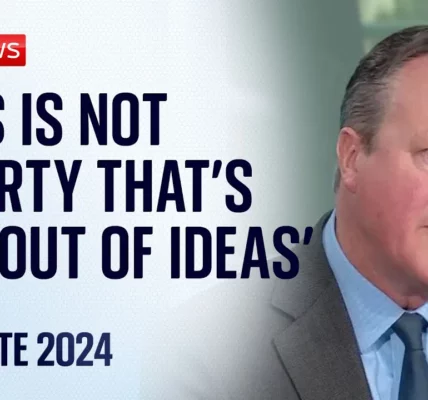Executive Actions to Secure the U.S. Southern Border

In a significant move to address the ongoing immigration crisis and secure the southern border, the President has announced a series of executive actions aimed at reforming asylum policies and enhancing border security. This article delves into the details of these actions, the political context surrounding them, and their implications for the future of immigration in the United States.
Introduction
The ongoing debate surrounding U.S. immigration policy has reached a critical juncture, with the President taking decisive steps to secure the southern border. After extensive negotiations with bipartisan support, the President’s administration has reached a point of frustration with Congressional Republicans who have seemingly prioritized political maneuvering over effective solutions. This article explores the recent executive actions taken, the rationale behind them, and the broader implications for immigration reform in America.
Background of the Border Security Agreement
Four months ago, after weeks of intense negotiations, a bipartisan border security agreement was reached, touted as one of the strongest in decades. However, Republican leaders in Congress walked away from the deal, largely influenced by external pressures, notably from former President Donald Trump.
The Political Landscape
This political maneuvering has been seen as a cynical tactic by some, aimed at undermining the current administration rather than addressing the pressing issue of border security. The President emphasized the need for a collaborative approach, stating that the border should not be weaponized for political gain.
The Role of Bipartisan Support
Bipartisan cooperation has been highlighted as essential for any lasting solution to the immigration crisis. The involvement of governors, mayors, and local law enforcement officials who live and work along the southern border underscores the non-partisan nature of the issue, emphasizing the urgency for real solutions.
Executive Actions Announced
In light of Congressional obstruction, the President has opted to utilize executive authority to implement immediate changes aimed at securing the border.
Restrictions on Asylum Seekers
One of the most significant changes announced is the restriction on migrants crossing the southern border unlawfully from receiving asylum. Under this new directive, asylum seekers must follow established legal processes to be eligible for asylum.
- Migrants can only receive asylum if they enter through lawful channels.
- Those who bypass these channels will face restrictions on their eligibility for asylum.
Improving Asylum Processing
In addition to the restrictions, the administration has implemented reforms to expedite asylum decisions, aiming to reduce the current backlog of over two million cases.
- Introduction of a new docket in immigration courts for quicker case resolutions.
- Proposals for faster removal of asylum seekers with criminal convictions.
- Efforts to combat smuggling networks and enhance law enforcement capabilities.
Collaborative Efforts with Mexico
A critical component of the new strategy involves strengthening partnerships with neighboring countries, particularly Mexico. The President has engaged in dialogue with Mexican leaders to collaboratively address migration issues.
Results of Diplomatic Engagement
According to reports, cooperation with the Mexican government has led to a significant decrease in unlawful crossings at the U.S.-Mexico border.
Future Collaborations
The administration plans to continue fostering this partnership to ensure a comprehensive approach to border security and immigration reform.
Long-Term Solutions and Legislative Needs
While executive actions can provide immediate relief, the President emphasizes that lasting change requires legislative action from Congress.
Investment in Border Security Resources
The proposed legislative measures include:
- Hiring 1,500 additional border security agents.
- Increasing the number of immigration judges to tackle case backlogs.
- Expanding the number of asylum officers for quicker processing.
- Investing in high-tech detection machines to combat drug smuggling.
A Call for Comprehensive Immigration Reform
The President’s long-term vision includes comprehensive immigration reform that addresses the root causes of migration, creating pathways for citizenship while ensuring border security.
Conclusion
The recent executive actions demonstrate a proactive approach to securing the U.S. southern border amidst ongoing challenges. By prioritizing effective solutions over political gamesmanship, the administration aims to restore order and efficiency to the immigration process.
As the situation evolves, it is crucial for Congress to step up and provide the necessary support to implement lasting reforms. The President’s commitment to a fair and humane immigration system reflects the values that define America. For further updates on immigration policy and related topics, visit our related articles section.
“`




